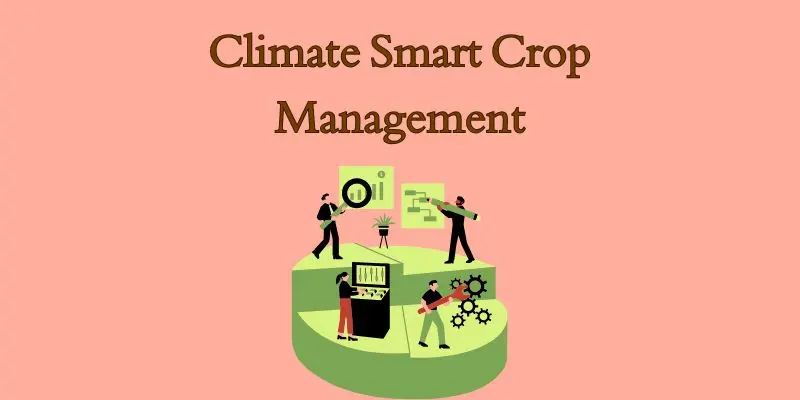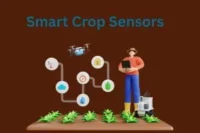Climate-Smart Crop Management: Farming for a Resilient Future
Published: 17 May 2025
Climate-Smart Crop Management: Farming for a Resilient Future? Honestly, it’s kind of hard to pin down at first. Is it about growing crops differently because of climate change? Or is it more about using technology to fix farming? Maybe it’s both? There’s talk of resilience, emissions, and something about smarter practices—but what exactly makes a crop “climate-smart”? It sounds important, especially with all the climate news these days, but figuring out what it really means can feel a bit overwhelming at first.
What Is Climate-Smart Crop Management?
Climate-Smart Crop Management: Farming for a Resilient Future refers to an agricultural approach that integrates sustainable farming practices designed to adapt to and mitigate the effects of climate change. This method focuses on improving crop productivity, enhancing resilience to environmental stresses, and reducing greenhouse gas emissions. It involves techniques such as precision agriculture, crop rotation, conservation tillage, and the use of climate-resilient crop varieties to ensure long-term food security and environmental sustainability.

Definition: A farming approach that:
- An agricultural approach focused on sustainability and climate adaptation
- Aims to increase crop productivity while reducing environmental impact
- Enhances resilience to climate-related stresses like drought and heat
- Uses practices such as precision farming, crop rotation, and conservation tillage
- Promotes climate-resilient crop varieties for future food security
- Increases productivity sustainably.
- Enhances resilience to climate impacts.
- Reduces greenhouse gas emissions.
Why It Matters: More Than Just Yields
- Farming is about food, family, heritage, and earth care.
- Climate change is:
- Causing erratic rainfall, rising temperatures, new pests.
- Increasing anxiety and economic risk for farmers.
- Climate-smart farming helps restore balance, security, and peace of mind.
Key Principles and Practices of Climate-Smart Crop Management
A. Crop Diversification
- Reduces risk of total crop loss.
- Builds resilience and stabilizes income.
B. Rotational and Intercropping Systems
- Improves soil fertility.
- Reduces pests and disease cycles.
C. Efficient Water Management
- Drip irrigation, mulching, rainwater harvesting.
- Conserves water and prepares for drought.
D. Climate-Resilient Crop Varieties
- Drought- and flood-tolerant seeds.
- Faster-growing or stress-resistant crops.
E. Soil Organic Matter & Carbon Management
- Practices: composting, no-till, cover crops.
- Boosts fertility, traps carbon, improves structure.
F. Data-Driven Decisions
- Use of mobile apps, weather forecasts, GIS mapping.
- Combines tech with local wisdom.
Stories from the Field:
- Share a few farmer stories:
- Turning to drought-tolerant crops during a dry year.
- Restoring degraded soil with cover crops.
- Quote: “I stopped fighting the weather and started working with it.”

How to Get Started
- Step-by-step guide:
- Assess climate risks on your farm.
- Start with one or two practices.
- Track and evaluate outcomes.
- Seek support from local groups, cooperatives, or extension services.
- Offer printable/downloadable checklist.
Common Challenges & How to Overcome Them
Challenge 1: High initial costs
Solution: Start small, use low-cost practices, look for funding/grants.
Challenge 2: Lack of information
Solution: Attend workshops, read local guides, learn from other farmers.
Challenge 3: Fear of change or failure
Solution: Emphasize gradual change, long-term gain, and community support.
The Bigger Picture:
- Climate-smart farming is part of a global solution to climate change.
- It protects food systems, restores degraded ecosystems, and honors traditional knowledge.
- Emotional close: “Your work doesn’t just feed people—it heals land and protects future generations.”
FAQs about Internet
Here are some of the most frequently asked questions about the Climate-Smart Crop Management: Farming for a Resilient Future
A sustainable farming system that increases yield, reduces emissions, and adapts to climate challenges.
Drought-tolerant maize, flood-resistant rice, millets, pulses, native varieties.
Not necessarily. It can include organic practices but focuses on climate resilience and emissions reduction.
Yes. Many practices are low-cost, scalable, and adaptable to small plots.
Conclusion:
- The content outlines strategies that help agriculture adapt to climate change while reducing its environmental impact. Key points include adopting drought-resistant crop varieties, optimizing water use through precision irrigation, integrating crop rotation and diversification, and improving soil health with organic practices. It also emphasizes the role of data-driven technologies, such as satellite monitoring and AI tools, to make informed decisions and increase yields sustainably.

- Be Respectful
- Stay Relevant
- Stay Positive
- True Feedback
- Encourage Discussion
- Avoid Spamming
- No Fake News
- Don't Copy-Paste
- No Personal Attacks

- Be Respectful
- Stay Relevant
- Stay Positive
- True Feedback
- Encourage Discussion
- Avoid Spamming
- No Fake News
- Don't Copy-Paste
- No Personal Attacks





